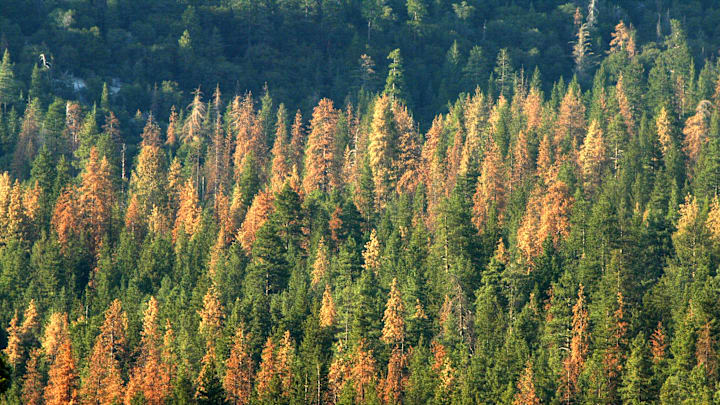The Importance of Urban Green Spaces for Biodiversity and Well-being

Urban green spaces, which include parks, gardens, forests, and green rooftops, play a crucial role in supporting biodiversity, enhancing ecosystem services, and promoting human well-being. These green oases in urban environments provide habitat for a wide range of plant and animal species, contribute to climate regulation, and offer recreational and health benefits to urban residents. Understanding the importance of urban green spaces is essential for promoting their conservation and sustainable integration into city planning.
Urban green spaces are biodiversity hotspots, supporting a variety of species adapted to urban environments. These green areas provide habitat, food, and shelter for birds, insects, small mammals, and plants, contributing to the overall biodiversity of cities. Urban green spaces can serve as refuges for species that have been displaced by urban development and habitat loss, supporting the conservation of urban wildlife. The presence of diverse species in urban green spaces enhances ecological interactions, such as pollination and pest control, which are essential for maintaining healthy urban ecosystems.
One of the primary ecological functions of urban green spaces is their role in regulating the urban climate. Green spaces absorb carbon dioxide during photosynthesis, storing carbon in the biomass of trees and plants and reducing greenhouse gas concentrations in the atmosphere. The vegetation in urban green spaces also provides shade and releases moisture through transpiration, helping to cool the urban environment and mitigate the urban heat island effect. This cooling effect can reduce the energy demand for air conditioning and improve the comfort and health of urban residents.
Urban green spaces play a crucial role in water management and flood control. The permeable surfaces of green spaces allow rainwater to infiltrate the soil, reducing surface runoff and the risk of flooding. Green spaces can also capture and filter stormwater, improving water quality and reducing the burden on urban drainage systems. The presence of vegetation in urban green spaces helps to stabilize soil and prevent erosion, contributing to the overall health and resilience of urban ecosystems.
Human societies benefit from urban green spaces in various ways, including health, recreation, and social cohesion. Access to green spaces has been shown to improve physical and mental health, reducing stress, promoting physical activity, and enhancing overall well-being. Urban green spaces provide opportunities for recreation and leisure, such as walking, jogging, picnicking, and birdwatching, contributing to the quality of life for urban residents. Green spaces also serve as social gathering places, fostering community interaction and cohesion, and promoting a sense of belonging and connection to nature.
Despite their importance, urban green spaces are under significant threat from urban development and environmental pressures. The expansion of cities and infrastructure often leads to the loss and fragmentation of green spaces, reducing their extent and ecological function. Pollution from urban activities, such as vehicle emissions, industrial discharges, and litter, can contaminate green spaces and harm wildlife. Climate change, driven by increased greenhouse gas emissions, affects the health and resilience of urban green spaces, leading to shifts in species composition and increased vulnerability to extreme weather events.
Efforts to conserve and expand urban green spaces are essential for mitigating these threats and ensuring their continued provision of benefits. Protecting existing green spaces through legal frameworks, zoning regulations, and community initiatives is a critical strategy. Integrating green infrastructure into urban planning, such as green roofs, walls, and corridors, can enhance the connectivity and ecological function of urban green spaces. Restoration projects, such as replanting native vegetation, controlling invasive species, and improving soil and water management, can help rehabilitate degraded green spaces and enhance their resilience.
Engaging local communities and stakeholders in the conservation and management of urban green spaces is vital for the success of these efforts. Recognizing the needs and preferences of urban residents ensures that green space initiatives are socially inclusive and culturally appropriate. Community-based management approaches can empower local people to take an active role in protecting and enhancing urban green spaces. Education and awareness campaigns can foster a greater appreciation of urban green spaces and encourage sustainable behaviors.
International cooperation and policies play a crucial role in addressing the global challenges facing urban green spaces. Initiatives such as the United Nations' Sustainable Development Goals, the Convention on Biological Diversity, and the Paris Agreement provide a framework for coordinated action to protect and restore urban green spaces. Financial incentives, such as grants, subsidies, and public-private partnerships, can support the development and maintenance of urban green spaces.
In conclusion, urban green spaces are vital for supporting biodiversity, enhancing ecosystem services, and promoting human well-being. Their ability to provide habitat, regulate climate, and offer recreational and health benefits underscores their ecological and social importance. However, urban green spaces face significant threats from urban development and environmental pressures. Conserving and expanding urban green spaces is essential for ensuring their continued provision of benefits and services. By recognizing the value of urban green spaces and taking concerted action to protect and enhance them, we can create healthier, more resilient, and more sustainable urban environments for the benefit of present and future generations.